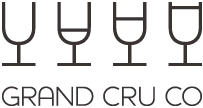Welcome to the World of Wine News, a quick glimpse at whats been happening in and around wine in general.
There are 1,368 known wine grape varieties. But 80 percent of the world’s wine production comes from 20. Of the remaining vitis vinifera, hundreds are at risk of going the way of the dodo. For instance, 155 Mediterranean endangered varieties are planted on less than 24 acres, according to the French Wine Mosaic Project, one of several institutions whose sole purpose is saving grapes from the abyss. Many grapes on the lengthy endangered list are at-risk for good reason: They make lousy wine. But several are not just drinkable, but damn delicious and deserve to be tasted. Below are several rarities worth trying. Pour them and you’ll not only expand your palate, you’ll help bring these varieties back from the brink.
Abouriou: A high-tannin, low-acid red grape, it’s planted on 800 acres in southern France and a few acres in California.
Producer: Old World Winery (Russian River Valley)
Abrustine: So at-risk, researchers are unclear how many actual vines exist of this native Tuscan red grape.
Producer: Podere Santa Felicita (Tuscany)
Altesse: A white grape found in France’s mountainous Savoie region.
Producer: Domaine Nicolas Gonin (Savoie)
Charbono: Grown on less than 250 acres in California, the grape is being revived by several notable producers. Charbono is the same grape as Argentine Bonarda and French Corbeau.
Producers: August Briggs, Bonny Doon, Pacific Star, Robert Foley and Villa Helena
Erbaluce: This ancient variety from Piedmont was first written about in 1606, and it’s grown on 780 acres. It can be made in a number of styles, but seek it out as a passito-style dessert wine.
Producer: Luigi Ferrando (Piedmont)
The Premiere Napa Valley auction 2016 included 226 unique ‘micro-lots’ of between 60 and 240 bottles each, all of them hand-labelled, individually numbered and signed by the winemaker. Nearly 200 came from the acclaimed 2014 vintage. For the first time, wine trade bidders from all over the world were allowed to bid online for 26 of the 226 wines, via the E-Premiere Napa Valley Online Auction. Top lots at this year’s event included wines from Italics Winegrowers, Memento Mori, Nine Suns, Realm Cellars, Shafer Vineyards, Duckhorn Vineyards and Silver Oak Cellars.
The 2016 auction coincided with the death of one of California’s wine pioneers in the 20th Century, Peter Mondavi, albeit the news was not announced until later in the weekend. There were many words of tribute on social media by Monday (22 February). More than 1,000 wine professionals attended the event, which is open to licensed members of the trade to buy wines for their customers, and is the longest-running regional barrel auction of wine futures in the US.
‘We’re thrilled with the results and we had a great day sharing our wines with our partners in the trade,’ said Doug Shafer of Shafer Vineyards, this year’s Premiere Napa Valley steering committee chair. ‘Over the past 20 years, Premiere has helped Napa Valley’s vintners to really push the quality envelope. Because of this event, I believe we’re all making even better wines.’
An alliance of campaign groups, including Confédération Paysanne and Générations Futures, urged people to take part in the Bordeaux pesticide protest last Sunday (14 February). Organisers reported a ‘great success’ for the event after seeing an estimated 600 protesters join them in the streets.
The move follows a television documentary on France 2 entitled ‘pesticides, our children at risk’, which pin-pointed the Gironde region that includes Bordeaux as one of the biggest pesticide users in France. More than 3m people watched the documentary, including the president of the Bordeaux wine council (CIVB), Bernard Farges. He told Decanter.com that he watched ‘the whole documentary, from start to finish, with careful attention’.
The other bodies involved in organising Sunday’s march were Collectif Alerte Pesticides Léognan, Les Amis de la Terre and Allassac ONGF. Générations Futures, an environmental campaign group, said that pesticides was ‘no longer just an issue for winemakers’. It was something that now concerned everybody in society, it said.
The CIVB has said little since the documentary, but stated that 45% of Bordeaux winemakers are registered as using sustainable agriculture, which includes a commitment to cut pesticide use.




